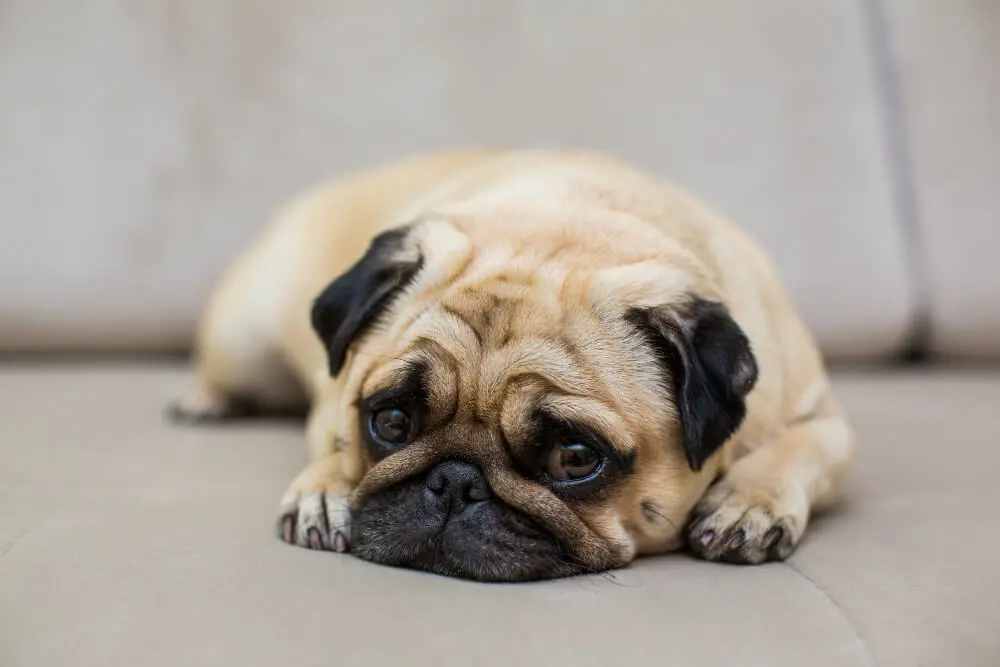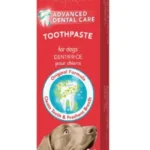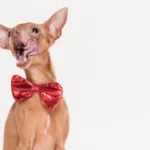We carefully select food for our dogs, ensure they get regular exercise, and keep a watchful eye on their overall well-being. However, despite our best efforts, there are moments when our dogs surprise us with their eating habits. One such scenario is when a dog gorges on dry food. If your dog gorged on dry food, then you understand how confusing it is not knowing what steps to take next.
Has your dog gorged on dry food? Or does it occasionally bloat? Today, I will share valuable insights and offer guidance to help you navigate this situation should it arise.
What is Food Bloat in Dogs?
Food bloat, also known as gastric dilatation-volvulus (GDV), is a condition that occurs when a dog consumes a large amount of food rapidly or ingests excessive air while eating. This can lead to the stomach becoming distended or twisted, causing discomfort and potential complications.
What Are the First Signs of Bloat In A Dog?
Early signs include restlessness and inability to get comfortable, excessive drooling, and a bloated, tight stomach. The dog may also attempt to vomit without producing anything more than froth and show difficulty breathing. GDV is an emergency that requires immediate veterinary attention. So, if your dog gorged on dry food and seems to be getting worse, seek emergency veterinary services.
Recognizing the Symptoms
It’s important to identify the symptoms of food bloat to take prompt action. Some common signs include:
- Abdominal Distention: The dog’s abdomen appears swollen or bloated.
- Restlessness: Agitation or pacing may indicate discomfort.
- Excessive Salivation: Drooling more than usual can be a sign of distress.
- Non-Productive Vomiting: Attempting to vomit without expelling any contents.
- Difficulty Breathing: Shallow breaths or rapid panting due to pressure on the diaphragm.
Did you notice any of these symptoms when your dog gorged on dry food? If you notice any of these symptoms in your dog, acting quickly and seeking veterinary assistance is crucial. Time is of the essence when dealing with potential cases of food bloat.
Causes and Risk Factors
Understanding the causes and risk factors associated with food bloat can help you prevent such incidents and keep their pets safe.
- Rapid Eating
Dogs that eat their meals too quickly are at a higher risk of developing food bloat. This is especially true for large breed dogs who tend to gulp down their food without taking time to chew properly.
- Dry Food Consumption
Dry kibble can expand in a dog’s stomach when it comes into contact with fluids, causing it to swell. If a dog consumes too much dry food in a short period, it increases the chances of bloating.
- Large Breed Predisposition
Certain breeds, such as Great Danes, Boxers, and German Shepherds, are more susceptible to food bloat due to their deep chests and anatomical predisposition. It’s important for owners of these breeds to be extra vigilant.
- Stress or Anxiety
High-stress situations or anxiety can lead to rapid eating or gulping down air while consuming food, increasing the risk of bloating.
By being aware of these causes and risk factors, you can take proactive measures to minimize the likelihood of your dog experiencing food bloat.
Signs of Gorging in Dogs
Gorging, or devouring food hastily, is not uncommon in dogs, but it can lead to health issues such as food bloat. Pet owners need to recognize the signs of gorging to intervene and implement preventative measures. Here are some telltale signs:
- Speed Eating: If your dog finishes their meal in less than a few minutes or seems to inhale their food without chewing, they could be gorging.
- Guarding Behavior: Dogs who need to protect their food may eat quickly to prevent others from getting to it. Watch for signs of food guarding, such as growling or eating faster when approached.
- Frequent Burping or Flatulence: These are common signs of swallowing too much air due to fast eating, leading to bloating.
- Regurgitation: Regurgitation shortly after eating is another sign of eating too quickly. Unlike vomiting, regurgitation involves expulsing undigested food with little to no effort.
- Competition: Dogs who live with other pets may eat faster out of fear that their food will be stolen. Competition from fellow pets can trigger gorging behavior.
Understanding these signs can help you take appropriate action, such as portioning food, slowing meal times, and reducing competitive eating situations.
Duration of Food Bloat in Dogs
The duration of food bloat in dogs can vary significantly and depends on several factors, including the severity of the condition, the size and breed of the dog, and how quickly treatment is sought.
In mild cases, where the dog’s stomach is distended due to overeating or gulping air, symptoms may subside within a few hours to a few days as the dog’s digestive system processes the excess food.
However, in severe cases where GDV occurs (the stomach twists along with bloating), this is a medical emergency requiring immediate veterinary intervention. If left untreated, this condition could be fatal within hours. Hence, it’s critical to identify the symptoms of food bloat early and seek professional help without delay.
After treatment, the recovery period also varies, depending on the dog’s overall health and the severity of the GDV event. Always follow your vet’s post-treatment advice for the quickest recovery.
Is Too Much Dry Food Bad for Dogs?
Indeed, too much dry food can potentially be harmful to dogs. Overconsumption of dry food can lead to obesity, a condition associated with various health issues like heart disease, diabetes, and joint problems.
Aside from overeating, the nature of dry food itself could pose risks. Dry dog food, often rich in carbohydrates and artificial additives, can contribute to allergies and digestive issues. Watch out for the worst dog food brands.
Additionally, as highlighted earlier, dry food rapidly swells when it comes into contact with fluids in the dog’s stomach, which can lead to bloat, a serious and potentially life-threatening condition if left untreated.
It’s crucial to regulate your dog’s food intake and ensure they eat a balanced, appropriate diet for their breed, size, and age. Always consult a veterinarian if you have concerns about your pet’s diet.
Preventative Measures
Prevention is always better than cure for our furry friends’ health. Here are some effective measures you can take to reduce the risk of food bloat in your dog:
- Slow Feeding
Using specialized slow-feed bowls or puzzle toys can encourage dogs to eat slower by making mealtime more engaging. This prevents them from gulping down large amounts of food in one go.
- Small Frequent Meals
Dividing your dog’s daily food intake into smaller portions and feeding them throughout the day can help prevent rapid eating and reduce the chances of bloating.
- Avoid Elevated Feeders
Contrary to popular belief, elevated feeders have not been proven to prevent food bloat in dogs. Opt for regular feeding bowls placed at ground level.
- Stress Management
Creating a calm and stress-free environment during mealtime can help your dog relax and eat at a slower pace. Minimize distractions and provide a comfortable space for them to enjoy their meal.
By implementing these preventative measures, you can significantly reduce the risk of food bloat in your dog and keep their digestive health in check. However, it’s important to note that no preventive method is foolproof, and vigilance is always key.
Treatment Options
Food bloat is an emergency situation that requires immediate veterinary attention. Time plays a crucial role in treating this condition effectively. If you suspect your dog is experiencing food bloat, here are some potential treatment options:
- Veterinary Consultation
Contact your veterinarian immediately and provide them with detailed information about your dog’s symptoms. They will guide you through the necessary steps to ensure prompt treatment.
- Stabilization
Upon arrival at the veterinary clinic, stabilization procedures may be performed to alleviate pain and stabilize your dog’s condition. This may include intravenous fluid therapy or medications to relieve discomfort.
- Decompression Techniques
The veterinarian may attempt to relieve pressure in the stomach by using various decompression techniques. These techniques aim to release trapped gas or alleviate torsion if present.
- Surgery
In severe cases of gastric dilatation-volvulus, emergency surgery may be required. Surgical intervention helps correct any stomach twisting and address potential complications.
It’s important to remember that seeking immediate veterinary care is crucial when dealing with food bloat. As a responsible dog owner, the prompt action taken by you can greatly impact the outcome for your beloved pet.
Can Food Bloat in Dogs Resolve Itself?
Food bloat in dogs is a serious condition that requires urgent veterinary intervention. It is a common misconception that food bloat can resolve itself over time. However, this is not the case. If left untreated, food bloat can rapidly progress to a life-threatening condition known as Gastric Dilatation Volvulus (GDV), where the stomach becomes distorted and may twist, cutting off blood supply to various body parts.
This condition’s severity and rapid progression mean that it won’t resolve without prompt medical intervention. Therefore, immediate veterinary care is crucial if you suspect your dog is suffering from food bloat.
Why Does My Dog Act Weird After Eating?
Dogs may exhibit unusual behavior after eating due to several reasons. Here are some possible explanations:
- Stomach Discomfort
If your dog shows signs of discomfort, pacing, or whining after eating, they could be experiencing stomach issues. Dogs have sensitive stomachs, and a sudden change in diet or overeating can lead to discomfort.
- Allergies or Intolerance
Food allergies or intolerance can cause various symptoms in dogs, including behavioral changes. If your dog starts acting weird after consuming certain foods, they might be allergic or intolerant to one or more ingredients.
- Eating Too Quickly
Dogs that eat too quickly might act peculiarly after meals. Rapid eating can cause bloating and discomfort, leading to unusual post-meal behaviors. Using slow-feed bowls can help mitigate this issue.
- Behavioral Issues
Sometimes, dogs can act weird after eating due to behavioral issues. If they need to protect their food, they might become anxious and exhibit unusual behaviors after eating. Creating a calm eating environment can help alleviate this issue.
If you notice your dog consistently acting weird after eating, it’s recommended to consult with a veterinarian. They can help identify the cause and suggest appropriate treatment or dietary changes.
Take Away
Understanding the risks and preventive measures associated with food bloat in dogs is essential for every dog owner. By recognizing the symptoms early on and taking prompt action, you can ensure your dog receives the necessary care and treatment. With this information, a dog gorged on dry food should not worry you. You have all the knowledge you need to deal with it appropriately.
Remember to monitor your dog’s eating habits, provide a stress-free environment during mealtime, and consult your veterinarian if you have any concerns. Together, we can keep our furry friends happy, healthy, and free from the discomfort of food bloat.





